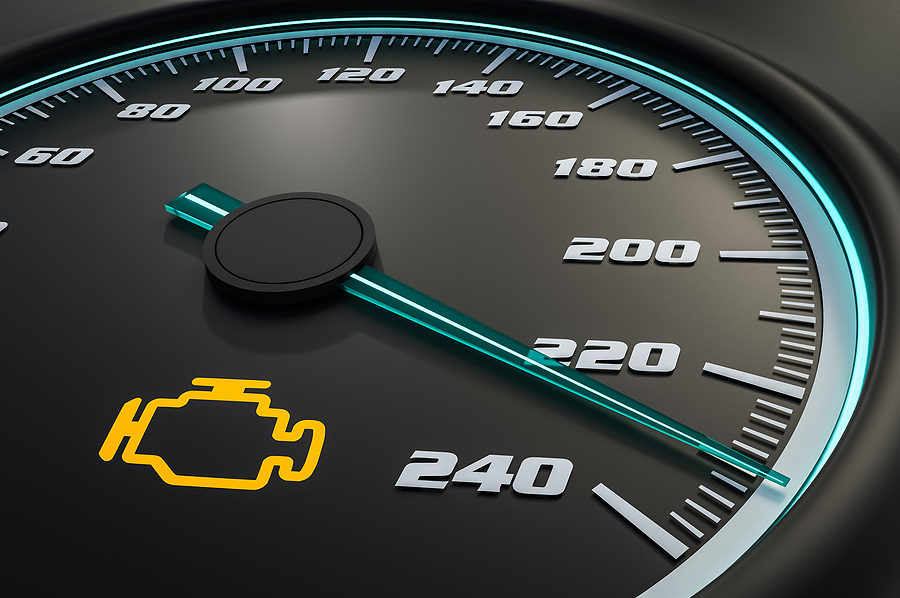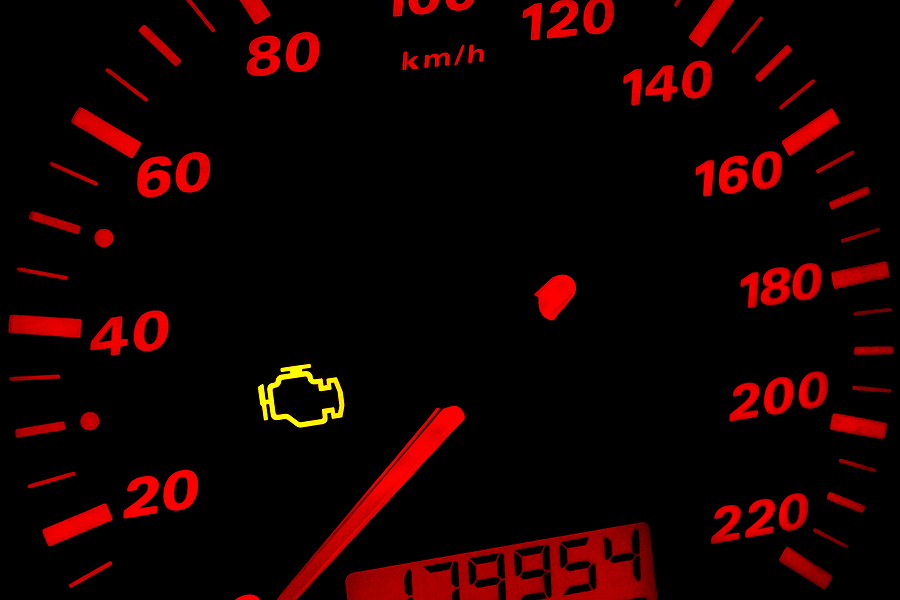We’ve all been there. You’re driving down the road, your favorite playlist blasting, when suddenly your check engine light flickers on. That little glowing symbol can send chills down your spine. Is it something simple, like a loose gas cap, or could it mean a costly engine repair?
This blog breaks down what the check engine light, also known as the malfunction indicator lamp (MIL), actually means. From common causes to how to diagnose the problem, we’ll explore every angle to help you stay calm, informed, and proactive.

Common Reasons for a Check Engine Light
The check engine light serves as your car’s way of letting you know something isn’t right. Sometimes, the issue is minor and easy to fix. Other times, it could signal a more serious problem that requires professional attention. Here are the most common culprits behind those dreaded dashboard warning lights:
1. Loose Gas Cap
A loose or cracked gas cap might seem trivial, but it can trigger your check engine light. It happens because the gas cap helps seal your fuel system, preventing fuel vapors from escaping. When it’s loose, your car’s sensors detect a leak and send an alert to your dashboard.
Quick Fix:
- Turn off the engine and tighten the cap until it clicks.
- If the light doesn’t turn off within a few drives, inspect the gas cap for cracks or damage and replace it if necessary.
2. Oxygen Sensor Issues
The oxygen sensor monitors the level of unburned oxygen in your car’s exhaust and ensures your engine uses fuel efficiently. Over time, this sensor can wear out, leading to reduced mileage and increased emissions.
Solution: Replace the faulty sensor promptly to prevent damage to other components, such as the catalytic converter.
3. Catalytic Converter Problems
The catalytic converter reduces harmful emissions by converting toxic gases into safer byproducts. When it malfunctions, you might notice a decrease in fuel efficiency or even a “rotten egg” smell coming from your exhaust.
Warning Signs:
- Poor acceleration.
- Unusual exhaust sounds or sulfuric odors.
Unfortunately, replacing a catalytic converter can be costly, so regular maintenance is crucial.
4. Mass Airflow Sensor Failure
This sensor measures the amount of air entering your engine, ensuring the right air-to-fuel ratio for optimal performance. Symptoms of a failing mass airflow sensor include rough idling, poor gas mileage, or difficulty starting the car.
When to Replace It: If your OBD-II diagnostic tool confirms the issue, replace the sensor to prevent long-term engine wear.
5. Spark Plug or Ignition Coil Issues
Faulty spark plugs or ignition coils can cause misfires or trouble starting your car. This not only affects performance but could eventually lead to more severe engine problems.
Proactive Tip: Regularly replace spark plugs according to your manufacturer’s recommendations to avoid this issue.
Diagnosing an Illuminated Check Engine Light
The good news is, you don’t have to be an automotive expert to start diagnosing the problem. Thanks to advances in technology, tools like an OBD-II scanner allow you to interpret error codes and pinpoint the issue quickly.
Using an OBD-II Scanner
OBD-II scanners, such as those by Bosch, plug into a port beneath your dashboard. These devices make it easy to read the error codes triggering the check engine light.
Interpreting Error Codes
Each code corresponds to a specific issue, and you can cross-reference these codes with your car’s manual or an online database. For example:
- P0455 might indicate a large fuel vapor leak, likely from a loose gas cap.
- P0300 could mean random engine misfires due to spark plug issues.
When to Consult a Professional
If the issue isn’t obvious or involves a critical component like the catalytic converter, it’s best to call an automotive diagnostics expert or visit a repair shop.
DIY Fixes vs. Professional Repair
Understanding when you can handle the problem yourself and when you need professional help is essential for managing costs and maintaining your car’s health.
Simple Fixes You Can Do
- Loose Gas Cap: Fix or replace it yourself.
- Replace Fuses: Easily fixable with a replacement from an auto parts store.
- Reset Error Codes (only if the issue is resolved).
When to Seek Professional Help
- Complex issues involving your engine, catalytic converter, or transmission.
- If multiple dashboard lights accompany the check engine light.
- When the issue persists after attempting basic fixes.
Learn How the Car Selling Process Works
Preventing Check Engine Light Issues
Prevention always beats repair. Regularly maintaining your car can significantly reduce the chances of seeing your check engine light blinking back at you.
Key Maintenance Tips
- Tighten the Gas Cap regularly to prevent fuel vapor leaks.
- Adhere to the Maintenance Schedule provided by your car’s manufacturer. This includes routine oil changes, fluid checks, and tune-ups.
- Address Unusual Symptoms Promptly to avoid minor problems escalating into major repairs.
- Use Quality Fuel and additives to keep your engine clean.
- Inspect Battery Terminals periodically to maintain a reliable electrical connection.
By following these tips, not only will you keep your dashboard lights clear, but you’ll also extend the lifespan of your car.
When the Light Means a Total Loss
Sometimes, a check engine light can be indicative of a serious, non-repairable issue. If the cost to repair your vehicle exceeds the vehicle’s actual market value, then your insurance company will likely deem it a total loss vehicle. In this case, your insurance company will likely offer you a cash payout for the value of your vehicle rather than covering the repairs. If your car is uninsured, selling to an auto salvage yard is your best bet.
Benefits of Selling a Totaled Car to an Auto Scrapyard
By choosing to sell your totaled car to an auto salvage yard, you have the opportunity to not only receive fair value for your vehicle, but also avoid ongoing expenses and immediate financial relief. Additionally, selling your car to a reputable salvage yard means that it will be properly recycled and disposed of in an environmentally friendly manner. Here are the main benefits:
Quick and Easy Solution ☑
Selling your junk car to an auto salvage yard is often a quick and easy solution for getting rid of your damaged vehicle. You won’t have to go through the hassle of finding potential buyers or dealing with negotiations. The process is typically simple and straightforward – just hand over your car and receive payment in return.
Environmental Impact ☑
By choosing to sell your totaled car to an auto scrapyard, you are also making a positive impact on the environment. These yards specialize in recycling and salvaging usable parts from damaged vehicles, reducing the need for new car production and ultimately decreasing carbon emissions.
Avoiding Storage Fees ☑
If you have a totaled car sitting in your driveway or garage, it’s likely that you are accruing storage fees. By selling your car to an auto salvage yard, you can avoid these additional costs and free up space on your property.
Cash Payment ☑
Another benefit of selling your totaled car to an auto scrapyard is receiving payment upfront in cash. This can provide immediate financial relief, especially if you are facing unexpected expenses due to the accident that caused your car to be totaled. It also eliminates the hassle of waiting for insurance companies to process claims and issue payouts.
Don’t Ignore That Light
The check engine light isn’t something to brush off. While check engine lights can sometimes indicate serious issues, they can also serve as a helpful reminder to maintain regular car maintenance and address potential problems before they become bigger and more expensive.
By regularly checking your dashboard lights and addressing any issues with your mechanic, you can keep yourself safe on the road and avoid costly repairs in the future.
Have you found yourself with a total loss car after getting back that astronomical auto repair bill? Let us ease the discomfort with an instant cash payment. Contact GC’s Junk Cars to get the junk car salvage process started. We tow away your car for free!
Get an Instant Junk Car Offer Now
Related Post: How Serious is a Check Engine Light? Let’s Find Out!

